 What if you made a 99-mile cross-country trip in your ultralight airplane and burned no avgas in the process? With stops to recharge your repurposed motorcycle batteries, that wouldn’t seem all that challenging, right? Well, it was enough to earn Gabriel DeVault an invitation to deliver the Paul MacCready Honorary Lecture at the 2019 Sustainable Aviation Symposium. The presentation was titled “Doing More With Less, Right Now!”
What if you made a 99-mile cross-country trip in your ultralight airplane and burned no avgas in the process? With stops to recharge your repurposed motorcycle batteries, that wouldn’t seem all that challenging, right? Well, it was enough to earn Gabriel DeVault an invitation to deliver the Paul MacCready Honorary Lecture at the 2019 Sustainable Aviation Symposium. The presentation was titled “Doing More With Less, Right Now!”
“Now” refers to doing what is possible with today’s existing technologies. “Less” was piloting his low-budget, electric-powered ultralight over sometimes inhospitable terrain and landing at fields with no on-site charging stations. “More” was having friend Bob Mackey bring a charger in his Maule as he flew in loose formation with Gabriel along the way. The pair created a mobile infrastructure that made the flight possible.
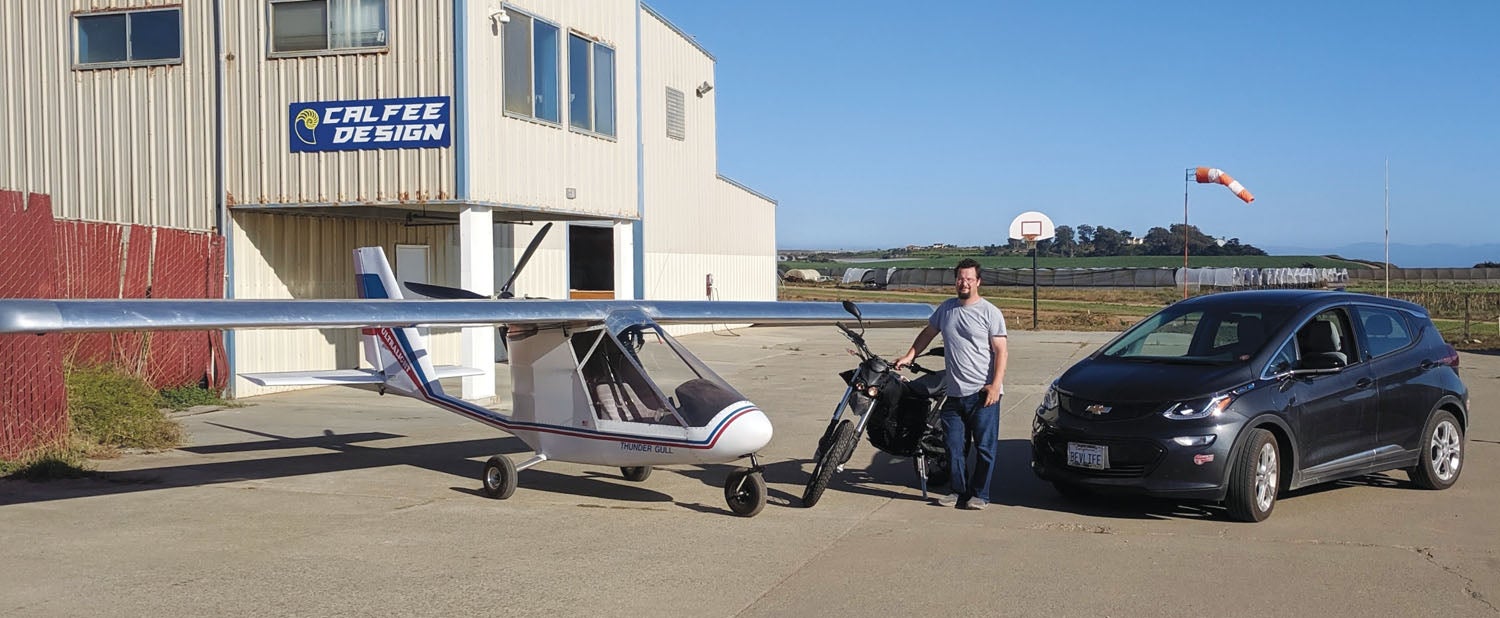
From Thunder Gull To eGull
Designed by Earthstar Aircraft’s Mark Bierele, the Thunder Gull ultralight is typically powered by an internal combustion engine. When Mark became interested in electric aircraft, he purchased a powertrain from Zero Motorcycles to use in a Thunder Gull airframe. Gabriel was head of research and development at Zero when Mark bought the powertrain, and his contribution to the project was assisting in the development of the powerplant itself and helping Mark configure it to work in the eGull.
Mark’s electric-powered eGull was a success, and he continues to convert Thunder Gulls into eGulls. A few years ago, the original eGull came up for sale, and Gabriel acquired it. After adding a new battery and some TLC, he had “a ridiculous amount of fun flying it around the Monterey Bay area” and using it for local work commutes.
During his symposium talk, Gabriel presented a thorough review of the eGull’s performance and features. He said that cruising at 55 knots (63 mph) it consumed about 8 to 9 kW (10.72 to 12 h.p.). This is borne out by two friends who report similar performance with their eGulls (see sidebar below).
Gabriel says you can find a “donor cycle” for somewhere around $10,000– $14,000. Including the cost for an eGull kit, the total remains below $40,000, and you might even get a few dollars back selling the motorcycle’s frame, wheels, tires and loose parts. There are several hundred already constructed Earthstar aircraft out there, so you might be able to find a good used one—if owners are willing to part with theirs.
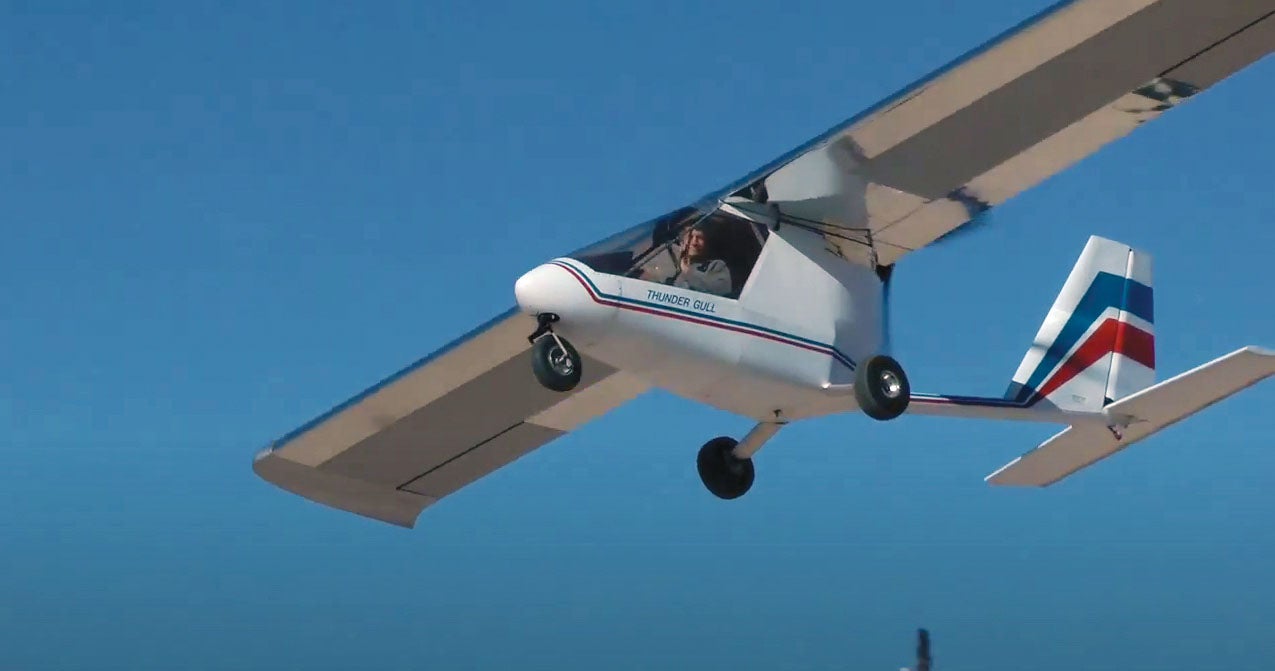
99 Miles in Four Hops
Gabriel decided to make the 99-mile flight from his home base in Watsonville, California, to his friend Bob Mackey’s home in Pine Mountain Lake, California, to present to the local EAA chapter. With a few weeks’ planning, the pair sorted out what they would need to make the trip safe and successful. They called and inspected airports along the way to determine what electrical service was available and what they might have to bring along (a lot, it turned out). They checked out many sites and are compiling a database of local fields and facilities that will benefit electric aviators in the near future.
Bob and Gabriel used windy.com to do best-guess forecasting of weather patterns that might affect the range of the eGull. They consulted skyvector.com to gain information on fields, communications channels and relevant flight planning intelligence. They even decided to make shorter than possible flight legs, guaranteeing a healthy battery reserve at each landing.
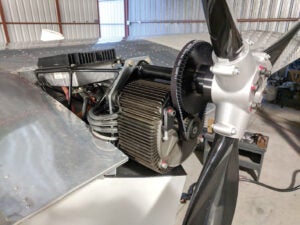
Although it could have been done in two hops, Gabriel’s flight took four short legs, each a unique experience. You can see a record of the flight on Gabriel’s YouTube channel.
The first leg, 16 nautical miles from Watsonville to Frazier Lake, was a safety move to ensure the 30-nautical-mile second leg from Frazier Lake to Gustine would land with an ample reserve. Gabriel explained that his original intent was to fly into Los Banos, but “strong winds around the St. Louis Reservoir convinced me to stay north and fly to Gustine, which is also closer to the next stop, Turlock.” Even this exposed the flight to “remote and rugged terrain with frequent strong and turbulent winds.”
The third leg, 19 nautical miles from Gustine to Turlock, was an easy choice, with “friendly terrain” and “mild winds.” The fourth leg, 34 nautical miles from Turlock to Pine Mountain Lake, tested the limits of the enterprise, combining the challenge of a long climb with an elevation change of 3000 feet and the warm batteries having just gone through a fast charge. Gabriel’s calculations showed he would have about 25% state-of-charge when he made the final landing.
Similar to the thermal management problems Joseph Oldham experienced with the Pipistrel Alpha Electro, Gabriel had to “throttle back” to maintain a lower rate of climb during the last 1000 feet of ascent. This mirrored his discomfort in reaching his “personal thermal limit” during the flight. It shows one benefit of electric power, though, in that the motor does not lose power in higher temperatures and altitudes, unlike its internal-combustion kindred.
When not in loose formation, Bob would fly ahead and set up operations for charging the eGull’s battery packs behind the pilot’s seat. On occasion, he had to craft an adapter cable to use the airport’s NEMA 10-50 plug. This is why Gabriel cautions that one major impediment, “the lack of charging infrastructure is quickly going to become the primary factor in what holds back electric aviation and all of its myriad benefits from further development and adoption.”
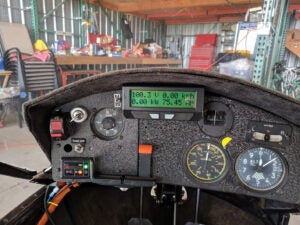
Onward and Upward
Throughout the trip, the eGull performed flawlessly, but Gabriel was ready for a new challenge. Taking electric flight to the next level, he began work on the eXenos. With two seats and longer endurance, the eXenos uses a newer, more powerful Zero motor, a project Gabriel oversaw during his years with the firm. “I was heavily involved in the entire evolution of the drivetrain, from brushed motors and lead acid batteries, all the way through to the current lithium-ion and brushless motor architecture,” he remarked.
The eXenos reflects developments at Zero over the last few years. “The eGull had a 2013 S drivetrain, with the battery upgraded to a 2017 ZF13.0 battery. This means 44 kW peak power, about 20 kW continuous power and about 11.5 kWh usable energy.
“The eXenos has a 2018 SR drivetrain with a ZF14.4 battery. This provides 55 kW peak power, about 25 kW continuous power and about 13 kWh usable energy.” The motors are virtually the same size and weight (around 50 pounds). Their PSRUs add only a few pounds.
Later model Zero motorcycles can benefit from adding a “charge tank,” an accessory that adds a 6-kW charger and can be connected to a charging station with an electric vehicle standard J1772 connector—something you can opt for with your Tesla or electric Hummer. Gabriel plans on supplementing that with a “power tank,” another Zero accessory that adds 3.6 kWh, which equates to 25% of battery capacity, but also adds 42 pounds. This would, according to Gabriel, allow cruise times of 90 minutes or so.
Documenting Performance
Gabriel used instrumentation from the Zero donor cycle and a phone app, Metrics for Zero Motorcycles, to log data from his flights. I asked him about different aspects of the data.
He verified that on his 99-mile flight, the motor and motor controller mirrored each other in temperature throughout the flight. Current and temps for both rose during takeoff and climb—then dropped during cruise. Gabriel wrote what the fluctuations were: “Just me messing around, I think I climbed to 3000 feet and did a bit of soaring, then some regeneration testing.” Note that battery current, motor current and pack voltage stayed fairly constant during this time.
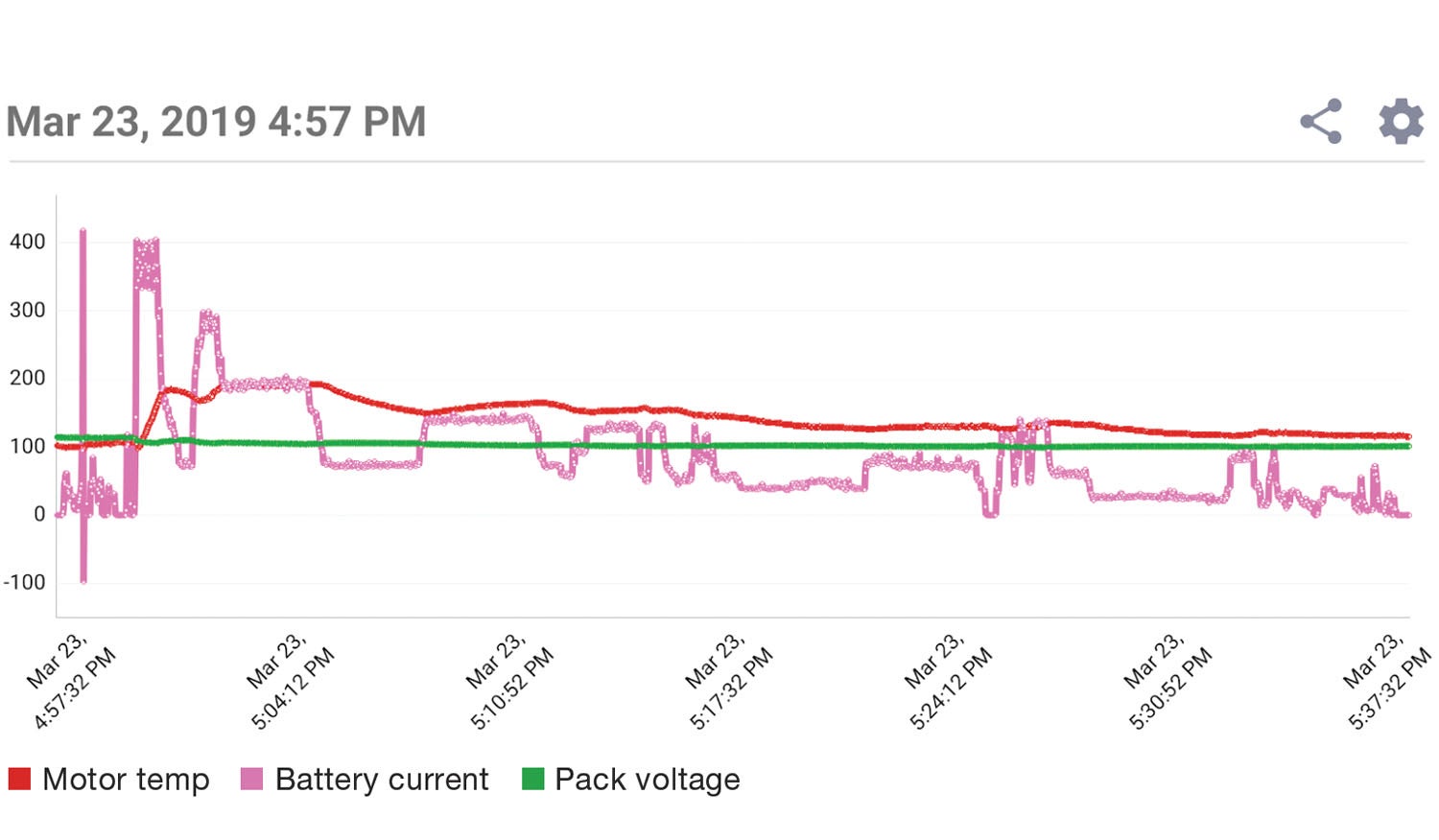
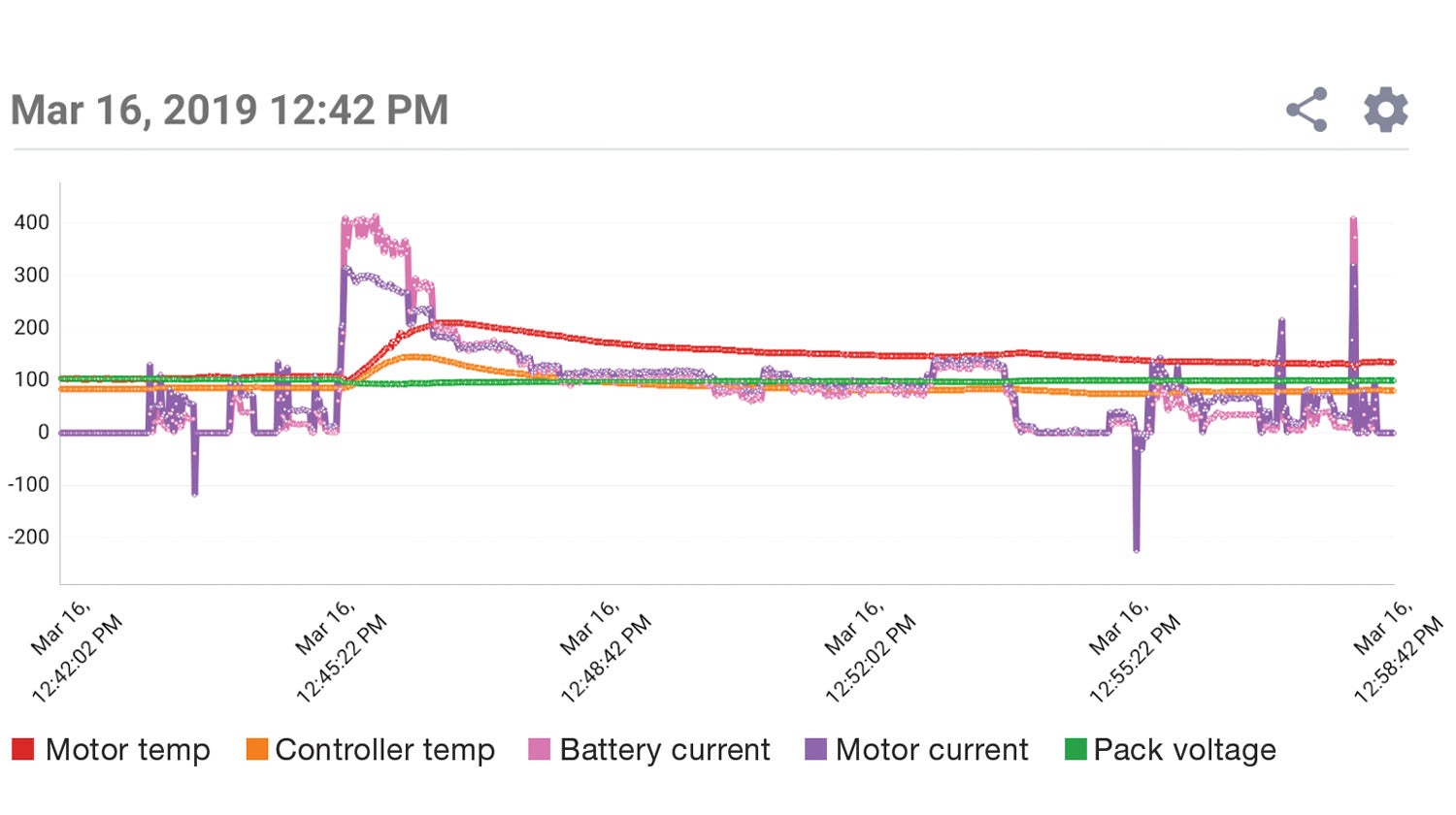
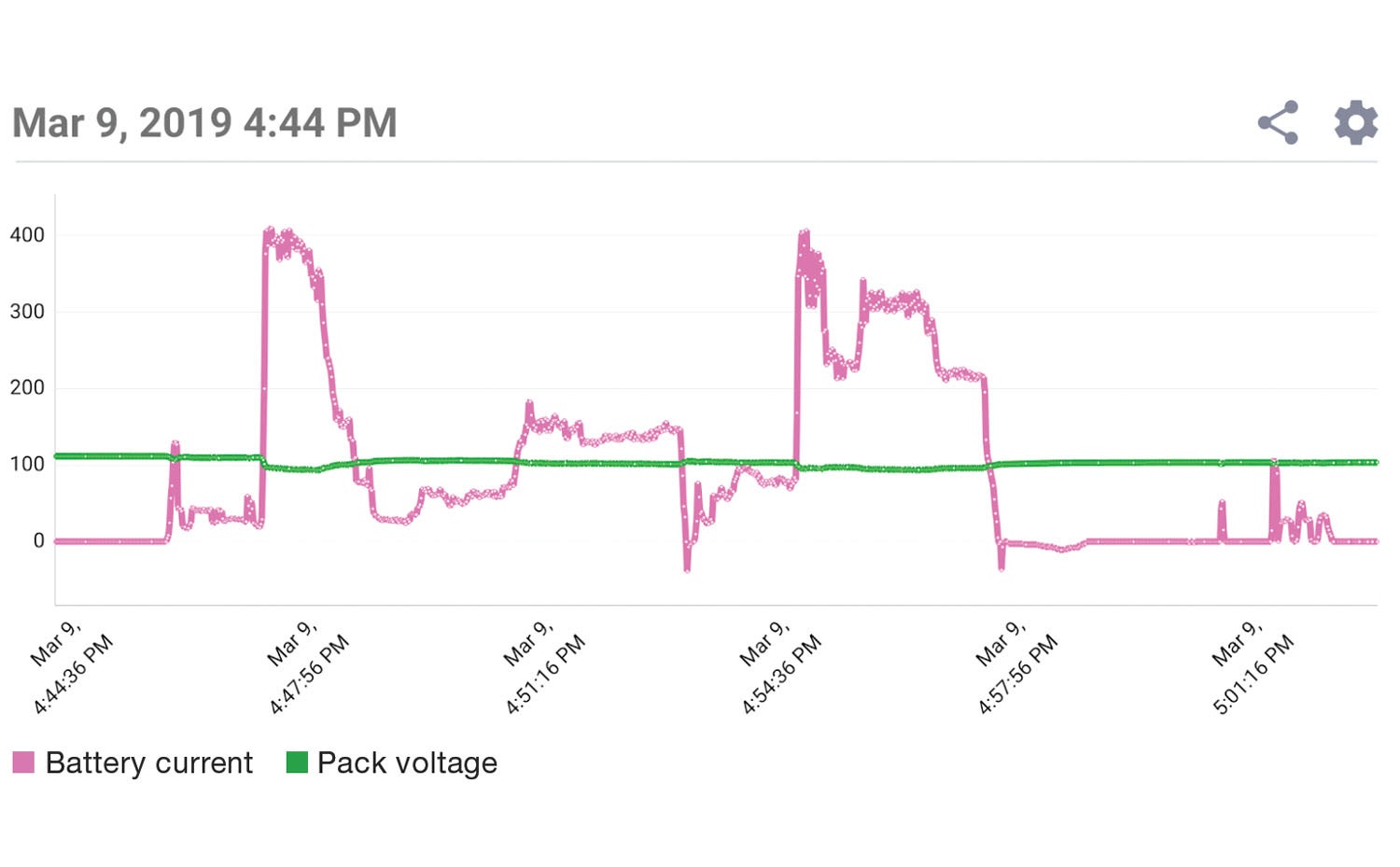
When asked about propeller designs that would optimize regeneration, he responded, “Unfortunately, I think the gains to be had are minimal and the tradeoffs too large for a fixed-pitch prop regeneration solution. If a prop manufacturer wants to work on a variable-pitch prop with some unique features for regeneration I have in mind, that would be great. A larger-diameter feathering or folding prop would provide more efficient climbing and reduce drag while soaring as well. I’m quite impressed with the Prince P-Tip on the eXenos now, and I’m working with them on the next iteration as well. More testing required!”
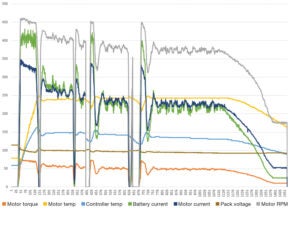
Asked about the rates of climb for the two airplanes, Gabriel reported, “The eGull [with its 69-inch three-blade propeller] is just a monster; it honestly climbs over 1000 feet per minute with a bigger guy like me and closer to 1500 feet per minute with a smaller pilot.” He notes, “It’s just so much power in a light and efficient aircraft, coupled with a relatively large and slow-spinning prop.”
With the 58-inch Prince P-Tip Gabriel compares the eXenos’ climb rate of 800 feet per minute “with what I would expect from a gas-powered Xenos. The climb angle is steep because Vx is something like 55–60mph.” Climb rate drops by about 15% when the plane carries a passenger, and as cruise power goes up, duration goes down by about 10–15%.
Gabriel corrected a few misapprehensions I had about electric motor torque being responsible for the high rate of climb of his e-machines. “Torque of electric motors is frequently misunderstood. Power is power—you just have to gear the output to get the torque at the rpm you want.”
I thought the eXenos might have significantly better range than the eGull, but Gabriel corrected that. “While the Vne of the Xenos is much higher, the efficient cruise speed of both aircraft is actually about the same—60 mph. So the overall range is pretty similar if they were equipped with the same batteries. Remember, the Xenos has about 15% more energy due to the newer battery, and I’m going to add another 25% on top of that. So it will have about 40% more range/energy than the eGull. The eGull was capable of 60 miles; the Xenos will do 70 miles now, and it should do a bit over 100 miles with the extra battery.
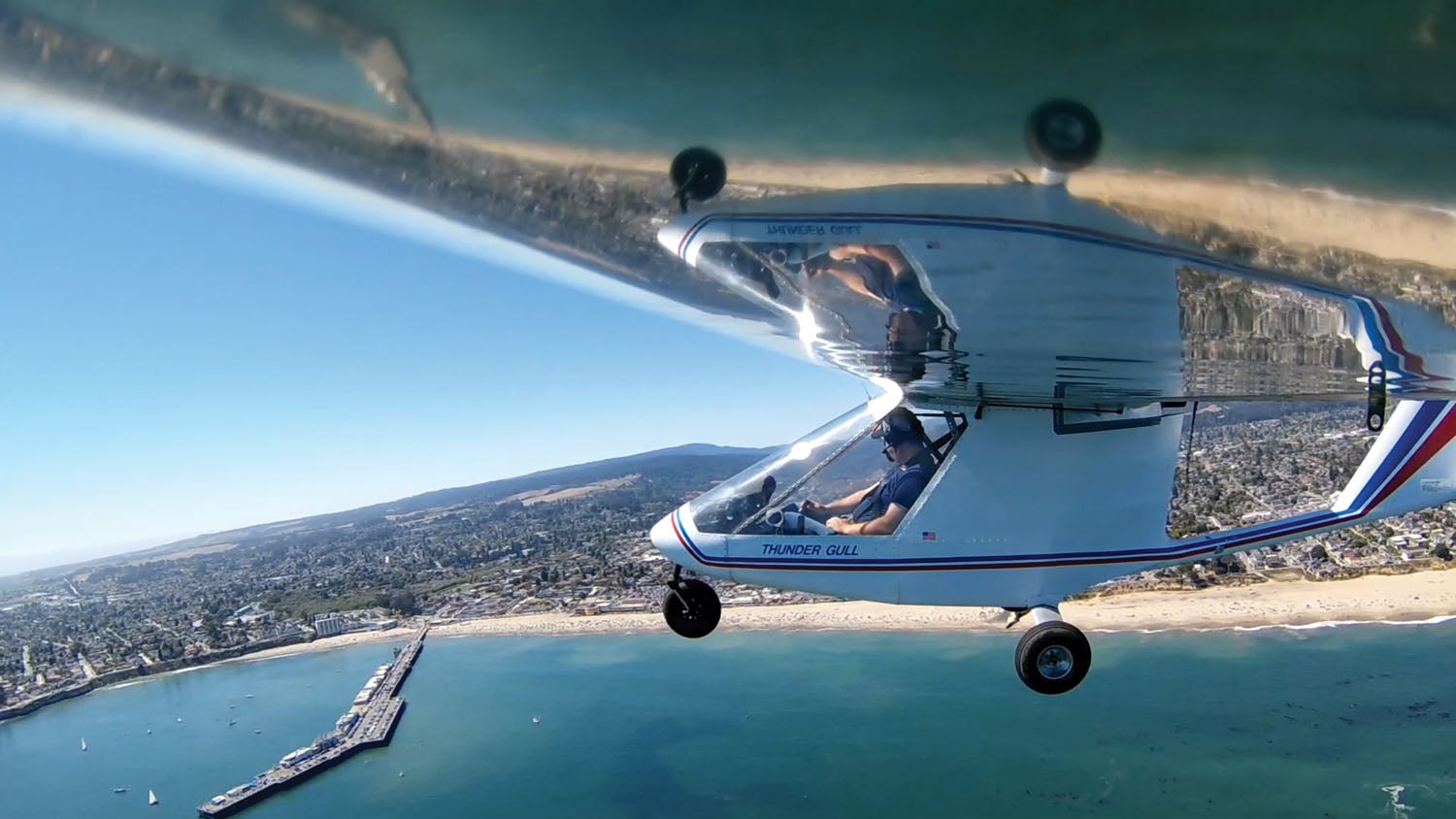
“Testing shows that we are able to cruise at about 115 mph at 25 kW, which means I can ‘dash’ up to about 50 miles at 90 mph. It will knock a few minutes off my morning commute!”
Gabriel thinks electric aviation may just be the salvation of recreational GA flying. “By my math, electric aircraft will be less than half the cost to own and operate compared to traditional aircraft,” he said. “I think they are going to be extremely popular, just as soon as the FAA will allow them. But we’re gonna need a place to charge!”
You can contact Gabriel directly at emotodude@gmail.com.
Bibliography
- HEIST Truck
- Recounting the Trip With Videos
- Report on SAS 2019 Presentation
- Murry Rozansky’s Xenos Flight Test (Note that prices have risen since this 2005 article)
- Sonex Podcast Episode 71 “Electric Xenos Motorglider”
- eGull Power Measurements
Photos: Courtesy of Gabriel DeVault.














is it possible to forward this article to the president of Pine Mountain Lake airport EAA chapter 1337 president Ed Gregory who hosted Gabriel?